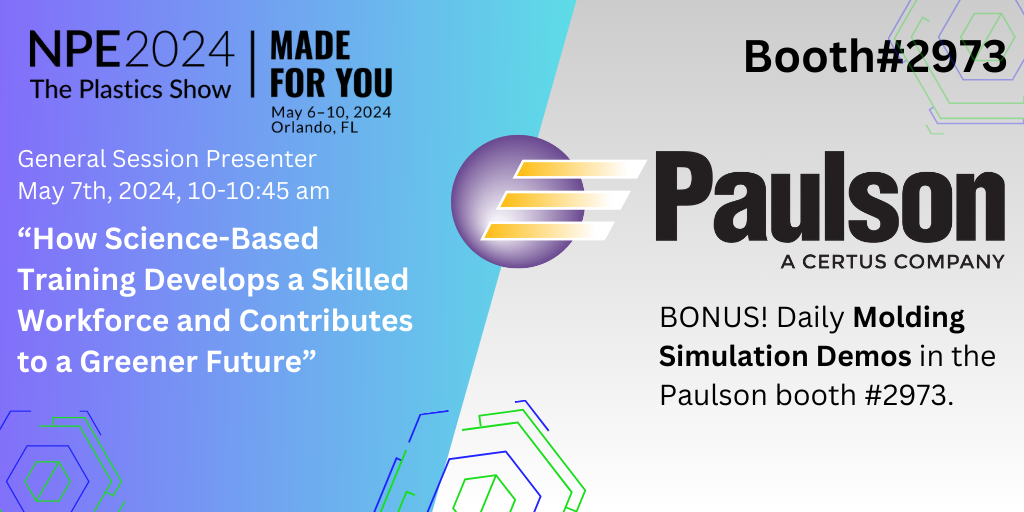If you’re familiar with molding you know that voids (holes) inside molded parts usually occur where walls meet or ribs attach to walls.
To scientifically analyze voids, or any molded part problem, look at the problem from “the plastics point of view”. It’s a method Don Paulson developed more than 40 years ago after he had determined that there are only 4 primary processing variables in the molding process. The 4 primary processing variables in molding (or any other plastic manufacturing process) are:
- Plastic cavity pressure
- Plastic melt temperature
- Plastic flow rate
- Plastic cooling rate
Those are the only processing conditions the plastic molecules can feel. The plastic knows nothing about the 20 or so machine controls that you have available to you to change those 4 variables.
So, if you could ask the plastic molecules, what would they tell you are the cause of voids inside plastic parts? They would say “There are not enough of us in here”. But there was enough plastic to fill and pack the cavities when the mold was filled. What happened to cause the void?
All plastic molecules have a specific distance from each other at room temperature and atmospheric pressure. When you increase their temperature and pressure during molding, you change that distance. During part cooling, the molecules on the outside surfaces cool first, pulling the nearby molecules to the distance apart they want to be. When the last molecules cool (the ones in thickest sections), there may not be enough molecules left so they can find their necessary spacing. When they shrink (moved closer together), a void forms. In one of our training sessions we show a mold with a glass window. You can actually see the cavity being filled and packed and there are no voids. Then as the plastic cools, a void suddenly appears in the thick section.
So, what the plastic molecules would say about the cause of vacuum void is “There aren’t enough of us here for all of us to shrink the amount we need to.” So, the plastic’s answer to voids is, “If you want to eliminate this void, put more of us in here”.
There are several control adjustments you can make to add more plastic molecules to the cavities. Even expert molders often argue about which control to adjust. Do you know what it is?
If you want the answer and explanation why, send us an email to info@paulsontraining.com with the subject line “Voids – How To Solve Them”.
Air (gas) bubbles can also cause voids in plastic parts, but voids caused by air bubbles are very rare. This part defect will be covered in a later blog post.


